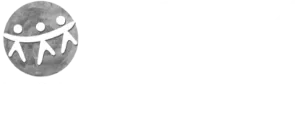I was given a glass of water, semi-brown in colour, the very first sip of which, bombed my taste buds with all the salt and minerals it contained. What if I told you that an average woman in Alampur, a village in Alwar district, spends her early morning hours, traveling long distances, just to fetch this contaminated water used for drinking and cooking. When was the last time we had to think this much about the water we drink? We, the people of metropolitan upbringing, often don’t realise how this basic universal right is the biggest struggle for most of our population, especially those living in the rural hinterlands of our country. This situation significantly impacts other basic human needs and rights as well – be it health, education or livelihoods.
Alwar is a district comprising of sixteen tehsils, and several social structures – Meo muslims, Meena tribals, hindu rajputs, forest tribes, yadavs and baniya businesspersons. As part of the national capital region, it has a large industrial area, and also has a prominent illegal mining mafia. Alwar, is an agrarian society, which is largely dependent on water for their cattle and fields. With growing family sizes and excessive land fragmentation, there has been a significant rise in the demand for water. When asked about water, Azam Khan (name changed), a resident of Alampur, spoke about the 70s and 80s when they used to find water just by digging five feet.
It was during this time that the government had incentivised construction of tubewells and borewells. While water was available at 50-60 feet in the 90’s, today the table has dropped to over a thousand feet deep in some areas. Azam told us that he had not seen optimum rainfall (for rainfed agriculture) for over 20 years now. A resident of Thanaghazi, another village in Alwar, spoke about how he raised loans (of about two lakh rupees) to dig a bore, and couldn’t find water even at 1100 feet. He then fell into a debt trap – and has raised another loan to dig a bore at another location because he couldn’t see a faster way to repay his first loan, especially given his skillset. He is currently on the lookout for odd jobs and opportunities that can help him raise money faster. As can be clearly seen, water has several forward and backward linkages. In my opinion, this problem is an amalgamation of the lack of awareness (of appropriate technology and indigenous methods), climate change, and dearth of alternative sources of income.
Azam Khan went on to talk about the quality of water, especially that found at deeper depths. He told us that there are excessive amounts of salt, silt and other minerals at such depths, which have severe consequences on their health and livelihoods. His son, who is 12 years old, had grey hair, and was suffering from joint pains and bone deformities. These occur due to excessive fluoride content in water (found in deep water tables) which lead to fluorosis. Not only that, these minerals sediment on soil and reduce its fertility significantly. At this point, Azam reminisced the lush green fertile lands of Alwar where the agrarians enjoyed large productivity and prosperity. Nowadays, there is a visible decline in crop productivity.
Essentially, much bigger families, who are still largely dependent on agrarian occupations, have much lesser produce (especially after land fragmentation) and incomes to sustain livelihoods. Azam Khan, ended our conversation by talking about how class plays into this whole crisis. The rich have deep borewells and sufficient water access, and pay by government tariffs. Because of availability and accessibility issues, the poor are often forced to pay for tankers of water. They spend about a thousand rupees to water a third of an acre, every single time there is scanty rainfall. He said –
“Bhaiya, gareeb toh hum hain, fir hum kyun pani jaisi cheezon ke liye amiron se das guna zyada paisa dete hain?” (Translates to – Why do I, a poor villager, pay ten times more than the rich for water?
In Alwar, I saw the dire need of solving the water crisis – which has intersections with social constructs like class and gender, and hinders livelihoods, education and health conditions of its residents. Can we use appropriate and relevant technological innovations and indigenous methods to tackle the water crisis? Isn’t there a need to acknowledge and work on climatic change, both at micro and macro levels? Should we bring a cultural shift from water intensive livelihoods to water efficient ones? Could we use community sharing and participative mechanisms to replenish water resources?
Paani da rang, preferred – clear. Thanks!




